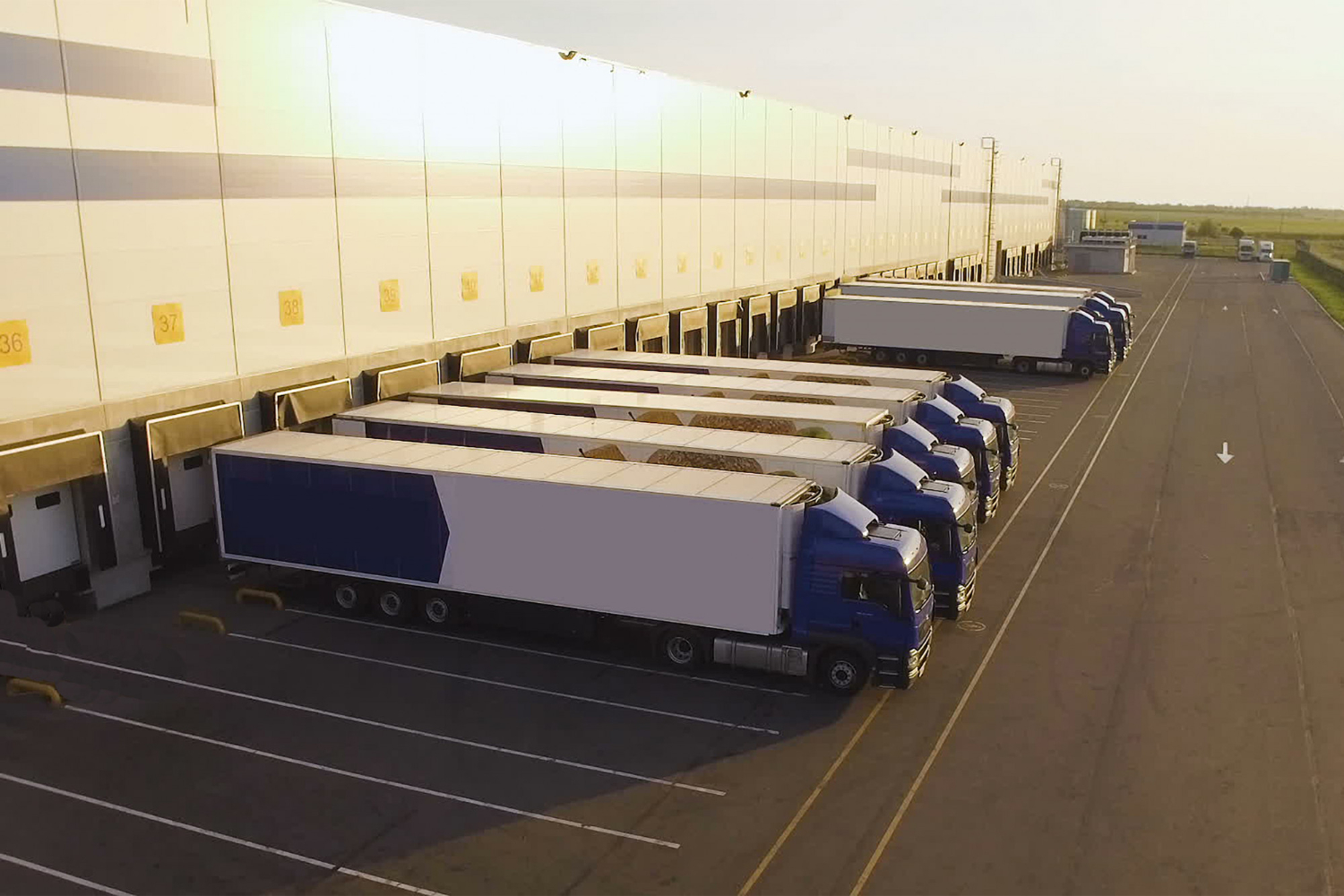Ensuring the safety and compliance of your drivers and vehicles may seem overwhelming. So if you are new to fleet management, then this guide is for you. This beginner’s guide empowers new fleet managers with the knowledge and best practices to navigate fleet health and safety compliance.
Today’s blog unpacks everything you need to know about fleet health and safety compliance and offers best practices to get you started. We’ll also explore the benefits of strong programmes and software solutions to keep your drivers and vehicles not just safe on the road but also healthy and compliant.
Understanding Fleet Health and Safety Compliance
In Australia, vehicles associated with work account for over 30% of all registered motor vehicles, and driving is thought to be a contributing factor in over 33% of work-related fatalities. Similarly, a study conducted by Monash University revealed that over 75% of work-related fatalities among truck drivers were a result of vehicular collisions.
These statistics alone highlight the importance of fleet safety, which encompasses practices and programmes designed to prevent accidents, injuries, and fatalities involving company vehicles. Moreover, it’s important to acknowledge that implementing a robust fleet safety programme can significantly reduce these numbers.
What is Fleet Safety?
Fleet health and safety compliance refers to the adherence to regulations, standards, and best practices aimed at maintaining the safety and integrity of fleet vehicles, drivers, and operations. Compliance encompasses various aspects, including vehicle maintenance, driver training, and regulatory adherence, to ensure that fleets operate safely and efficiently.
Why invest in a fleet safety programme?
The benefits of a robust fleet safety programme extend far beyond driver well-being. Here’s a compelling look at the advantages of prioritising fleet safety:
- Reduced Accidents: Strong safety programmes lead to fewer accidents, protecting drivers, other motorists, and pedestrians.
- Lower Insurance Costs: A positive safety record translates to lower insurance premiums for your fleet.
- Reduced Costs: Accidents lead to hefty expenses, including vehicle repairs, medical bills, and legal fees. A safety programme can significantly lower these costs.
- Enhanced Brand Reputation: Promoting safety demonstrates your commitment to social responsibility and builds trust with clients and partners.
- Improved Productivity: Accidents and injuries take drivers off the road, impacting business operations. Safety programmes minimise downtime and ensure efficient deliveries.
- Boosted Employee Morale: When drivers feel safe and valued, morale improves, leading to a more positive work environment.
- Improved Driver Performance: Training and safety initiatives cultivate more responsible and skilled drivers.
Importance of Compliance for Fleet Managers
Compliance plays an important role in fleet managers’ responsibilities for several compelling reasons:
- Legal Obligations: Regulations and standards governing the transportation industry impose legal requirements on fleet managers. Compliance with these mandates is non-negotiable to avoid penalties, fines, and legal liabilities. Failure to adhere to these regulations can result in severe consequences, including legal action and reputational damage.
- Safety: Fleet managers’ primary concern is ensuring the safety of their drivers, vehicles, and the general public. Compliance with safety regulations and standards is paramount to preventing accidents, injuries, and fatalities. Fleet managers mitigate the risk of potential hazards on the road by maintaining vehicles in safe operating condition and ensuring drivers receive adequate training and qualifications.
- Reputation: Compliance significantly contributes to fleet operations’ reputation. Demonstrating a commitment to safety, professionalism, and regulatory adherence enhances the credibility and trustworthiness of the fleet management team. A positive reputation can strengthen relationships with clients, stakeholders, and the community, fostering long-term success and sustainability.
- Costs: Compliance measures can lead to significant cost savings for fleet managers. By reducing accidents, vehicle downtime, and maintenance expenses, compliance initiatives improve operational efficiency and profitability. Additionally, adhering to regulations can help avoid costly fines and legal fees associated with non-compliance, further contributing to the financial health of the fleet management company.
Overall, compliance is not merely a regulatory requirement but a fundamental aspect of effective fleet management. It ensures legal adherence, promotes safety, enhances reputation, and drives cost savings, ultimately supporting the success and longevity of fleet operations.

Best Practices for Maintaining Fleet Health and Safety Compliance
Achieving and maintaining compliance requires implementing best practices tailored to the specific needs and requirements of fleet operations.
1. Develop a Comprehensive Fleet Safety Policy
This document should outline your company’s commitment to safety and expectations for drivers. It should cover topics like safe driving practices, vehicle maintenance procedures, and accident reporting.
- Outline clear expectations for driver behaviour, including safe driving practices, fatigue management, and adherence to traffic laws.
- Include guidelines for pre-trip inspections, vehicle maintenance schedules, and accident reporting procedures.
2. Invest in Driver Training
Regular training programmes focusing on defensive driving techniques, hazard awareness, and safe vehicle operation are crucial. Invest in comprehensive driver training programmes to equip drivers with the knowledge and skills needed to operate vehicles safely.
- Provide regular training programmes on defensive driving techniques, hazard awareness, and safe vehicle operation.
- Consider incorporating driver safety workshops and certifications.
3. Implement Regular Vehicle Maintenance
Proactive maintenance ensures your vehicles are in top condition, minimising the risk of breakdowns and accidents.
- Establish preventive maintenance schedules to ensure all vehicles are in top working condition.
- Conduct thorough pre-trip inspections to identify and address potential issues before drivers hit the road.
4. Foster a Culture of Safety
Recognise safe driving practices, encourage open communication about safety concerns, and involve drivers in programme development.
- Regularly communicate safety messages and recognise safe driving practices.
- Encourage open communication and empower drivers to report safety concerns without fear of repercussions.
5. Leverage Technology for Lone Worker Safety
Utilise advanced safety technologies, such as telematics systems, dashcams, and collision avoidance systems. Telematics systems can track driver behaviour, monitor vehicle health, and provide real-time feedback for improvement. Leverage data insights to identify areas for improvement and implement corrective actions proactively.
- Utilise fleet management software to track vehicle performance, monitor driver behaviour, and automate maintenance schedules.
- Consider installing telematics systems that provide real-time data on driver activity and vehicle location.
Fleet Management System: Your Safety Partner
The market offers a variety of fleet management software solutions. Choosing the right one depends on your specific needs and budget. One of the popular options known for their safety features is Teletrac Navman.
Several software solutions can streamline your fleet safety efforts. Here are some features to consider:
- Driver Monitoring: Track driver behavior, location, and fuel efficiency.
- Compliance Management: Stay updated on regulations, vehicle inspections, and driver licensing.
- Maintenance Scheduling: Automate maintenance reminders and track service history.
- Accident Reporting: Simplify incident reporting and record-keeping.
💡Choosing the right software depends on your fleet size, budget, and specific needs. Conduct thorough research and compare features before selecting a software solution to find the best fit for your company.
Bottom Line… Ensuring Fleet Health and Safety Compliance with Ubivio
Running a fleet comes with a big responsibility: the safety of your drivers and everyone on the road. Running a successful fleet operation goes beyond just assigning vehicles and drivers. That’s why ensuring the health and safety of your fleet is critical, not only for legal compliance but also for the well-being of your employees and the general public.
We at Ubivio…
- Commits to a culture of continuous improvement by regularly reviewing and refining fleet safety policies, procedures, and practices.
- Fosters collaboration and open communication among all stakeholders involved in fleet operations, including drivers, managers, maintenance technicians, and regulatory agencies.
- Encourages proactive reporting of safety concerns and incidents to facilitate timely resolution and preventive action.
- Above all, we demonstrate our commitment to safety through leadership support and resource allocation. We allocate sufficient resources and investments towards safety initiatives, recognising that prioritising safety yields long-term benefits.
Contact Hexicor today to find out how we can assist you in choosing the right fleet management technologies for your business. Visit Hexicor fleet services for more detailed information and tailored advice. Let’s find the right solution for you.
Frequently Asked Questions(FAQs) about Fleet Health and Safety Compliance
How can driver training improve fleet efficiency?
- Comprehensive driver education equips drivers with the ability to drive safely. Ongoing education on hazard awareness and emergency procedures promotes a safety-conscious culture and reduces the risk of accidents.
What are the consequences of non-compliance with fleet health and safety regulations?
- Non-compliance with fleet health and safety regulations can result in penalties, fines, legal liabilities, and reputational damage for fleet operators.
How can fleet managers enhance the welfare of their drivers?
- Organisations can promote driver wellness through initiatives such as health screenings, fitness programmes, and stress management resources. Addressing factors that contribute to driver fatigue, such as long hours and irregular schedules, improves drivers’ physical and mental well-being.
What role do telematics devices play in fleet health and safety compliance?
- Telematics devices enable fleet managers to detect and resolve compliance concerns by monitoring and analysing vehicle performance, driver behaviour, and compliance data in real time.
When it comes to fleet compliance management systems, what are the most typical obstacles?
- Resource restrictions, technology limitations, and organisational opposition to change make fleet compliance management system implementation difficult.
What role do safety technologies play in fleet health and safety compliance?
- Safety technologies, such as telematics systems, dashcams, and collision avoidance systems, enhance driver safety and vehicle monitoring. By leveraging data insights, organisations can identify areas for improvement and implement proactive measures to mitigate risks.
Why is compliance monitoring and reporting important in fleet safety management?
- Compliance monitoring and reporting enable organisations to track driver behaviour, vehicle performance, and adherence to safety protocols. Capturing mishaps, near misses, and safety breaches allows companies to act quickly and prevent future accidents.











